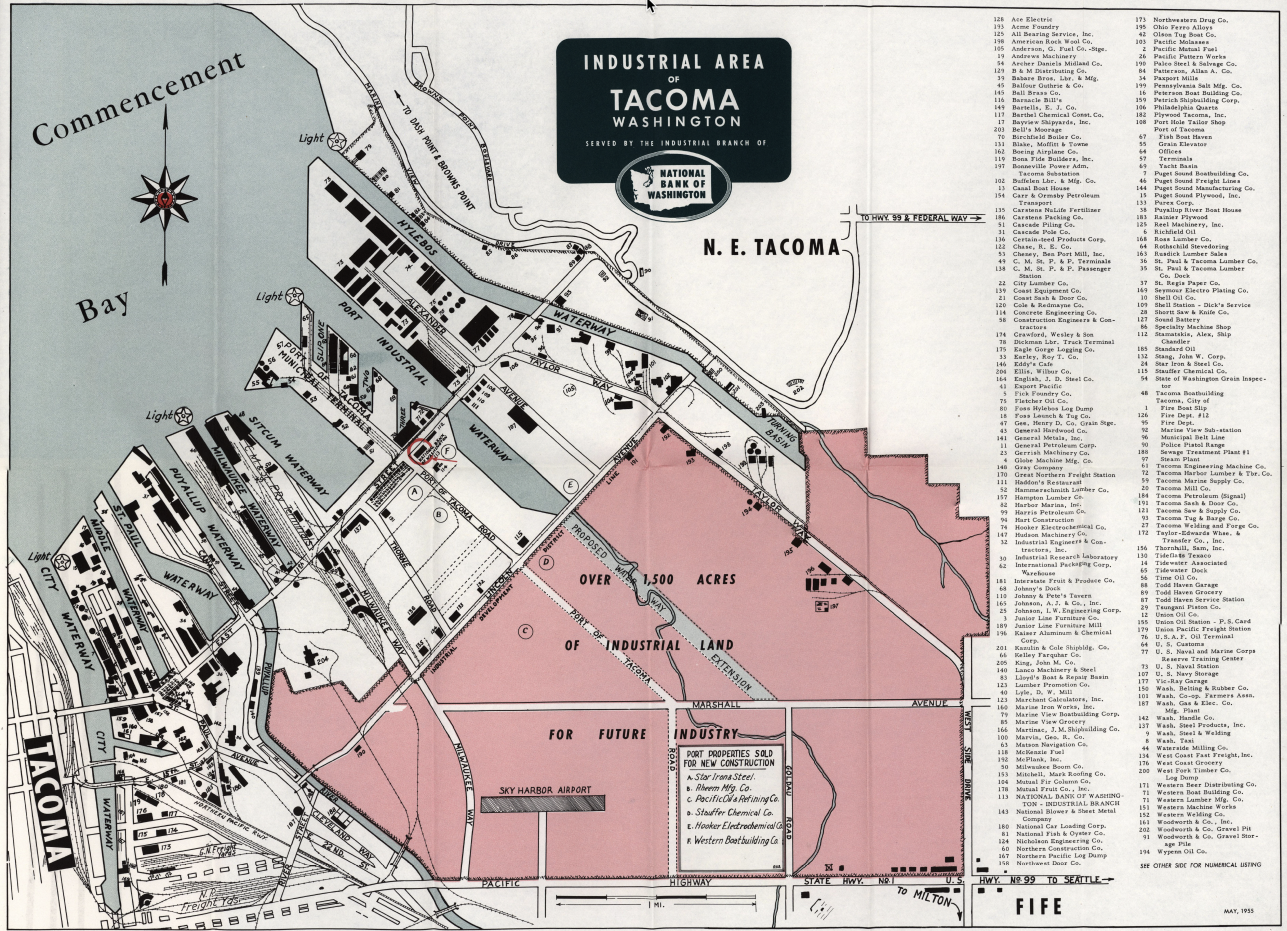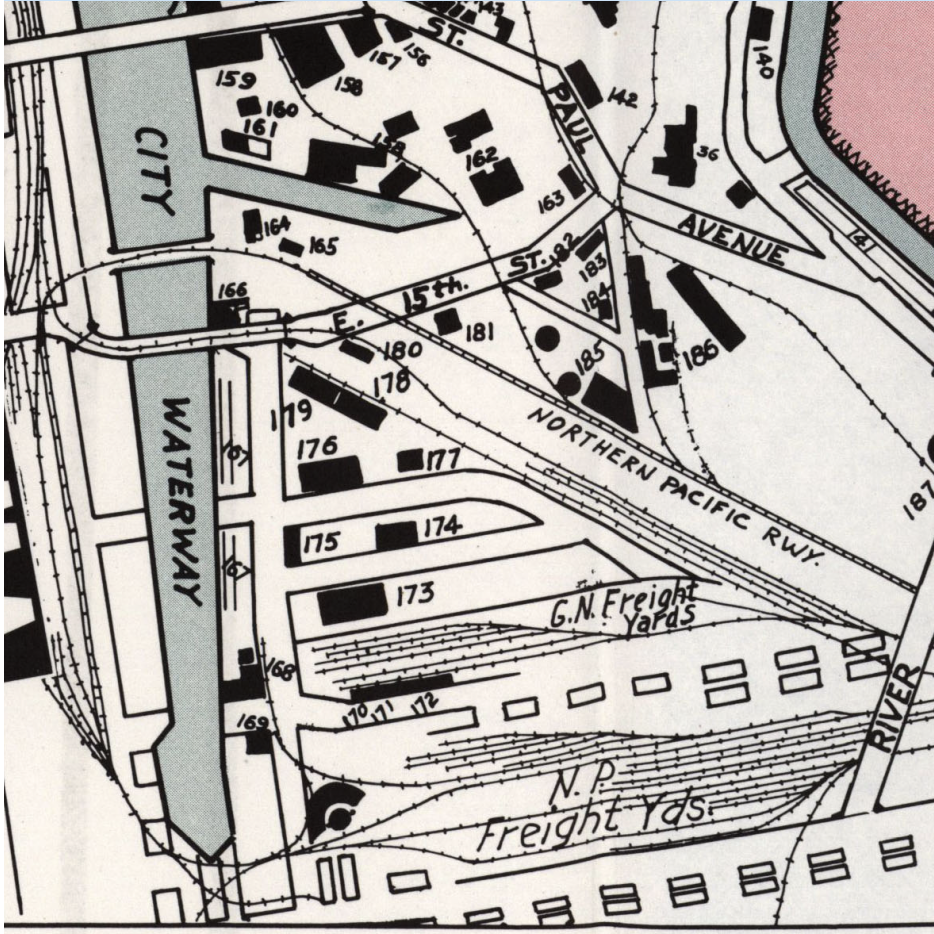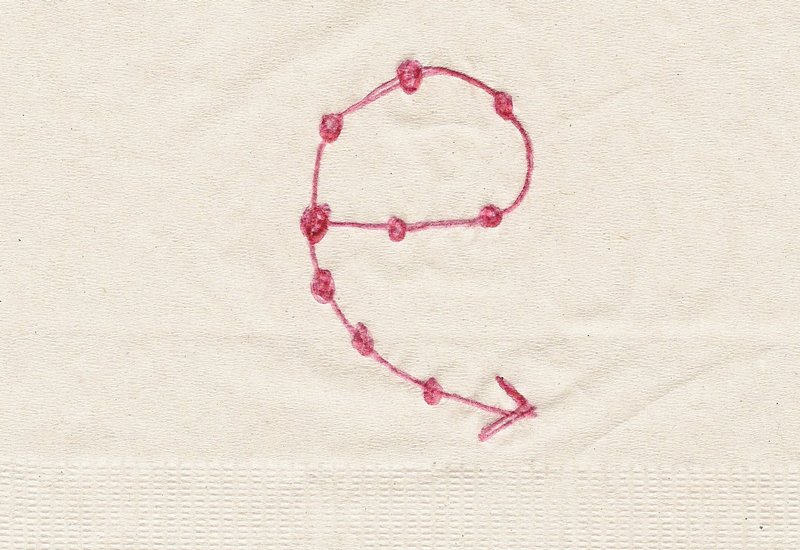Structuring Audio Narratives
As I mentioned earlier, restructuring your historical research as an audio narrative can be a helpful way to identify ambiguities in the work and to highlight or forefront material you find most interesting in the research. Some of the restructuring is pretty intuitive–instead of quoting from interviews or oral history recordings, you will just be adding those audio clips to your timeline in the editing process. A more complex challenge is how you arrange your material so it’s intuitive as a story.
The Tideflats

For example, I worked on a project recently that examined an area just outside of Tacoma, Washington called the Tideflats that was the largest meat packing facility west of the Mississippi River in the early 1900s and is currently the location of the Tacoma Northwest Detention Center, operated by the GEO Group on behalf of the U.S. Immigration and Customs Enforcement. I wanted to look at the area through the lens of urban planning and examine the ways that both institutions are located just far enough away from the city center that residents wouldn’t be mindful of their environmental and civil impacts but close enough to benefit from tax breaks, trade routes and workforce from the city.

I opened by walking to the area, which was only about 15 minutes from where I lived at the time, recording all of the ambient noise along the way to give the listener a sense of place. Then I moved the narrative back and forth between the detention center and the packing plant according to subjects that they both shared in common, such as immigrant groups, labor organization and environmental damage, before arriving at a conclusion that repeated and added elements from the introduction. To help orient listeners, I utilized low level instrumental music when I am talking about the historic material and my contemporary field recordings discussing the present day. This becomes an audio shorthand that you can use so the listener knows when or where you are discussing.

Teacher and radio producer Rob Rosenthal suggests another storytelling structure that may be more dynamic than a linear timeline; the ‘e’.10 Instead of starting from the chronological beginning and working incrementally to the end, you begin at the middle during a particularly interesting or emblematic event, swoop backwards, reiterate the middle again (perhaps from another narrative perspective) and then arrive at the end of your chronology. Dropping listeners in the middle of a curious, incredible or volatile scene can help hook listeners and get them interested in the combination of events that led up to it.
✺